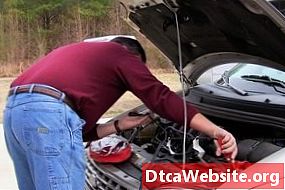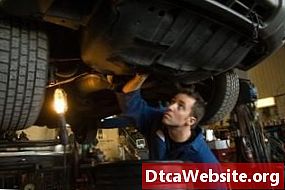
Contenu

Drive Transfer Case
A Ford AWD (All Wheel Drive) vehicle has a normal engine configuration. The flywheel connects to the back of a standard automatic transmission, which provides turning power, measured in torque. Rather than connecting directly to a driveshaft as it normally would with a rear or front wheel drive vehicle, the Ford AWD connects the torque converter at the end of the transmission to a housing called a drive transfer case.
Dual Drive Shafts
The drive transfer case is a housing in which the starting points of two separate driveshafts sit. Normally a front or rear wheel drive vehicle has only a single driveshaft. The rear driveshaft connects directly with the torque converter, extending to the cars rear axle. The other driveshaft is located beneath the torque converter and is connected to it by a linked metal pulley called a drive chain. It extends to the cars front axle. When the torque converter at the end of the transmission turns, it causes both driveshafts to turn simultaneously in the same direction.
Locked Differentials
Each driveshaft connects to a device sitting in between each of the vehicles axles called a differential. The differentials power to the wheels to make them turn. Most cars have an open differential, which s power to just one of the tires on each axle, allowing for the car to turn without difficulty. Most four wheel drive vehicles have open differentials as well. The difference between a four wheel drive and an AWD vehicle is that the four wheel drive can switch between ing power to a single axle or both. AWD always s power to both axles. Normally, when a four wheel drive system is engaged, it causes some difficulty when turning on roads and flat surfaces. This is thanks to the open differential, which, when power is being sent to both axles, prevents the wheels on one side of the car from turning at a lower speed than the other, inhibiting turns. AWD systems do not do this because they have locking differentials that can allow the wheels on each side of the vehicle to turn at different rates. This is done by means of a controlling computer called a Powertrain Control Module. It has sensors on each of the wheels, and when the wheels are angled to turn, it allows the differential to disengage, unlocking the axle temporarily for the turn.


